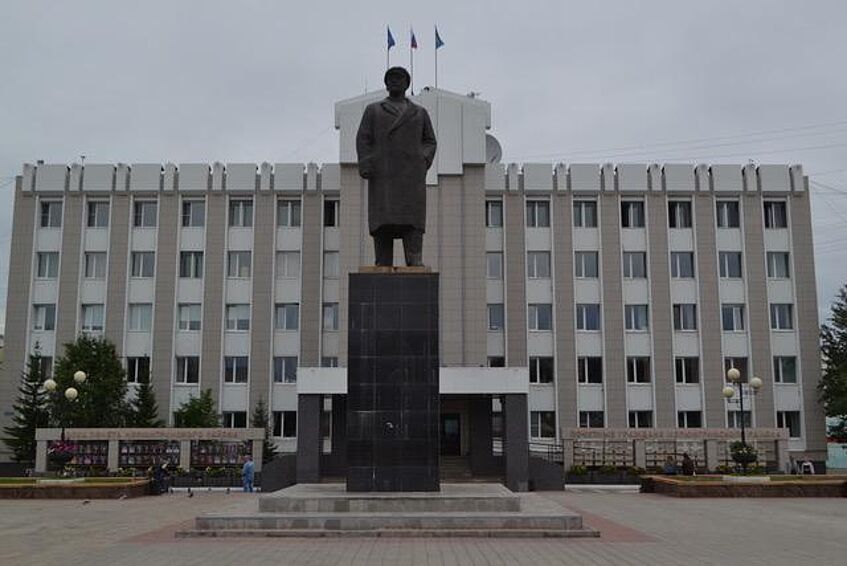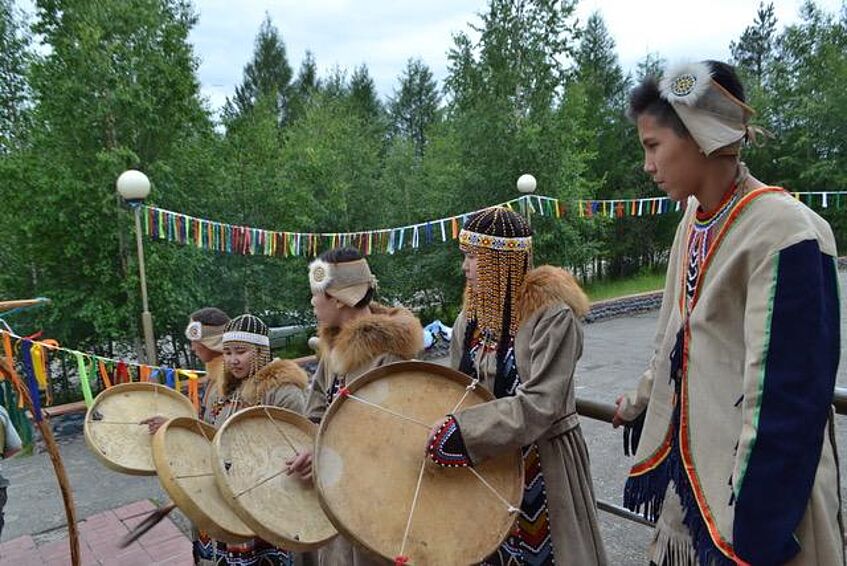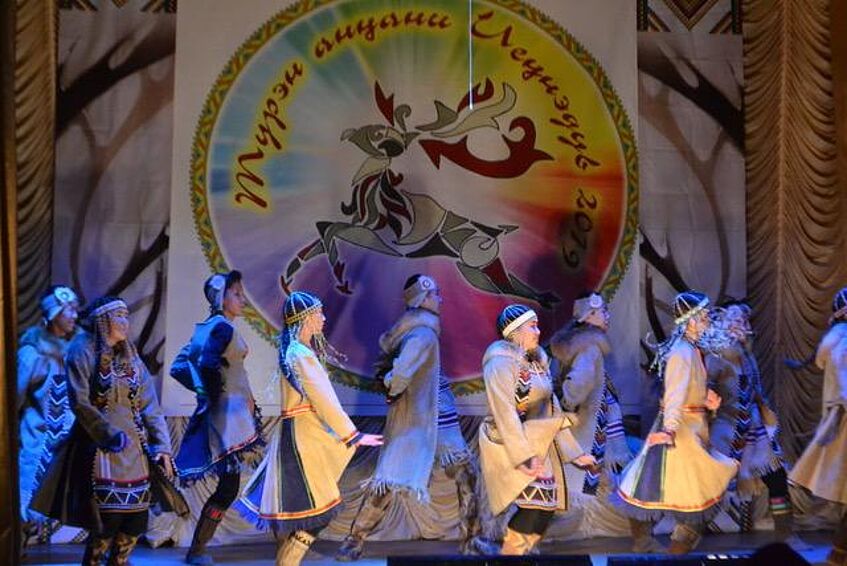Component A Fieldwork. July 20 – 27, 2019
Olga Povoroznyuk
This additional and final fieldwork on Component A of the CoRe project was conducted in the city of Neryungri and in the neighboring indigenous village of Iengra in the south of the Republic of Sakha (Yakutiya). This fieldwork aimed at filling the gaps of information on the key topics of the component - memory, identity, social dynamics, and served as a comparative case to earlier visited towns and indigenous communities along the BAM in the Republic of Buryatiya, Zabaykal’skiy Kray and Amurskaya Oblast’.
Neryungri
According to the district administration, Neryungri has the population of 57009 people. It is the second largest city in Yakutiya and among the largest communities in the BAM/AYaM Region. The history of the city is closely connected with the exploration of rich mineral resources (coal, gold and semi-precious stones) of South Yakutiya. The settlement was founded in the 1950s with the beginning of geological prospecting in the region. However, it was the construction of the BAM side branch Tynda-Berkakit and associated plans of formation of industrial provinces that boosted the growth of the town. In 1975, due to population increase and new urban infrastructure, Neryungri eventually received the status of a city.
Currently, the headquarters of the largest Russian companies with transnational investments (“Kolmar”, “Mechel”, “El'gaugol'”, etc.) that are also the largest employers in the region, are located in the city. The neighboring towns of Chul’man (the former outpost of the region’s exploration), Berkakit and Zolotinka (established as railway stations during the heyday of BAM construction), and Serebryanyi Bor have virtually turned into the suburban areas connected with Neryungri by regular pubic transport. The airport based in Chul’man, as well as the railway stations (separately for cargos and passengers) make the city a transportation hub of the regional scale.
The city name originates from Evenki term nerungra “the graying river”. Indeed, Neryungri is home to a mixed population consisting not only of Soviet migrants (primarily, Russians and Ukrainians) who came to the region on state program of “mastering of the North” and, especially, for the BAM construction, but also of indigenous Yakut and Evenki people. Since the population peak in 1998, the number of city residents has been declining due to outmigration to other regions. At the same time, the local population of neighboring towns and indigenous village Iengra has been recently concentrating in Neryungri. The city hosts indigenous culture festivals and educational projects, such as experimental school “Arktika” for the children of indigenous numerically small peoples of the North from Yakutiya. Established 20 years ago, the school is famous for its quality education with the focus on the languages and cultures of indigenous Evenki, Even, Yukagir, Dolgan and Chukchi people.

Lenin statue. Neryungri, Central square
During my stay in Neryungri, I had an opportunity to conduct several expert interviews with specialists of the district and city administrations who have been living and working in the city since the days of its foundation. While the present and the future of the city and the surrounding areas heavily depends on coal mining and other extractive industries, the BAM construction remains a milestone of local history. One can feel it especially strong in the small town of Berkakit that has its own museum of the BAM and monuments to railroad builders, and where the railway station is the central site and the railroad is the main place of work. Former builders of the BAM (bamovtsy), some of whom currently work in the Russian railroads company “RZhD”, eagerly shared with me their first-hand experiences and memories of the construction period, triggered by the recent celebrations of the 45-th anniversary of the BAM construction.
In addition to bamovtsy, I had an opportunity to talk to indigenous teachers who work at the school “Arktika”, as well as to writers and activists striving for revitalization of indigenous languages and cultures and for indigenous rights challenged by the intensive industrial exploitation of the region. Finally, I had a rare opportunity to work with archival records and photo-materials of the Museum of history of exploration of South Yakutiya in Neryungri.

Railway station in Berkakit
Iengra
Indigenous village Iengra received its name from the respective river. The toponym is metaphorically translated from Evenki as “branched antlers”. According to the local administration, the village has currently the population of 1026 people, including 725 Evenki residents. In fact, the village established in 1929 was originally called Zolotinka (from Russian “gold”) because of the golden mining that started in the area back then. During the early Soviet period, the kolkhoz with the same name was established, where collectivized reindeer herders and hunters were drawn. By the time of arrival of the BAM, Zolotinka was a prosperous indigenous community that lived off the “traditional industries” with a number of families who continued nomadic way of life on the lands assigned to the kolkhoz. In 1976, the community concluded agreements with construction, transportation and mining organizations operating on its lands. The organizations were to construct electricity transmission lines, a school, greenhouses and other infrastructure objects, to facilitate local transport or to provide other forms of social and material support to the community. In 1977, with the opening of the BAM and establishment of the neighboring railroad town Zolotinka, the Evenki village had to give its original name away and adopt the new name of Iengra. The BAM construction meant not only the renaming of the village, but also an enormous inflow of population that drastically changed the local social environment. Not only Evenki got involved with the BAM as porters and unskilled workers, but also BAM builders got settled in the village and assimilated into the community through mixed marriages and joint subsistence practices (hunting and herding).
While many Evenki residents remember the BAM construction and the associated life period with a note of nostalgy, most of them cannot get along with “what the BAM has brought”. The increasing industrial exploitation is bringing the community to the brink of environmental disaster. While coal extraction in the vicinity of Neryungri produces noise and air pollution, the village itself, according to informants’ words, is “besieged” by gold mining companies that endanger the safety of drinking water and leave lifeless “moonscapes” behind. Most of my interlocutors complained that in the current situation, not only the traditional Evenki lands are alienated, but the whole community has to cope with unprecedented and unregulated environmental pollution and distraction.

Evenki greeting ceremony in Iengra
Despite this grim side of industrial development, the community proudly keeps the status of “ethnic village” (natsional’niy poselok). The new house of culture “Eyan” that has recently been built in the village, regularly hosts festivals, educational activities and sport competitions involving indigenous youth. During my short visit to the village, I was lucky to attend a cultural festival organized to greet a delegation of indigenous school children from Sakhalinskaya Oblast’ who visited the community on an exchange program between the two regions. The local school in Iengra is named after the famous Soviet ethnographer and the world expert on Evenki people Glafira Vasilevich, who once visited the village. It serves as another center of attraction of local intelligentsia and youth and as a platform for innovative educational and cultural projects that promote the value of Evenki traditions and way of life. Observations, conversations with teachers, artists, reindeer herders, as well as expert interviews with the local administration helped me to understand the role of the BAM and the current situation of the community which history and future are inscribed in the context of industrial exploration of South Yakutiya.

Evenki dance performance in Iengra
The author thanks the local residents and experts who took part in this research and the following institutions that provided logistical and information support:
Museum of the History of Exploration of South Yakutiya in Neryungri named after I.I. P’yankov
Administration of the village Iengra
The cultural center “Eyan”
The secondary school named after G.M. Vasilevich in Iengra
